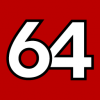-
Posts
12437 -
Joined
-
Last visited
-
Days Won
554
Content Type
Profiles
Forums
Events
Everything posted by Fiery
-
Power Load and Max Power Load should already be available on the Computer / Power Management page of AIDA64
-
Thank you for the feedback. Do you mean no sensor support for H110i GTX in AIDA64 or in Corsair Link software?
-

New corsair AXi series sensors and monitoring
Fiery replied to Ramses's topic in Hardware monitoring
No problem at all AXi PSUs provide the following readings in AIDA64: - 3.3V, 5V, +12V, -12V, PSU Input voltages - 3.3V, 5V, +12V currents - 3.3V, 5V, +12V, PSU power draws - PSU1, PSU2, PSU3 temperatures - PSU fan (only shown on the Sensor page when the fan is spinning) CPU Package temperature is provided by the CPU itself. -
I meant MSI Command Center. Doesn't it have a monitoring module? http://download.msi.com/uti_exe/command_center.zip
-

New corsair AXi series sensors and monitoring
Fiery replied to Ramses's topic in Hardware monitoring
No group of PSU related entries will be shown for the AXi, but 2 or 3 PSU temperatures, PSU fan and PSU power should all appear on the Sensor page. However, PSU fan will only appear there when the fan is spinning. Power efficiency is computed using a proprietary formula, and it's not available in AIDA64. -
Thank you for your kind words
-
Per-core multipliers are not listed simply because on a many-core system it would ruin the layout of the Overclock page You can still place the per-core core clock readings on the OSD Panel or SensorPanel, or use the CPU Clock Monitor (apparently you've figured the latter out already )
-

New corsair AXi series sensors and monitoring
Fiery replied to Ramses's topic in Hardware monitoring
Based on those dumps, it should work fine. Are you sure you don't get readings on the Computer / Sensor page? Note that PSU sensor readings may replace (overwrite) certain motherboard sensor readings, like +5V or +12V voltages. You can also try right-clicking on the bottom status bar of AIDA64 main window --> HWMon Modules --> Corsair AXi / HXi / RMi and see how the Sensor page readout changes. Try to disable the PSU sensor module, see how the Sensor page content changes, and then try to enable it again, and see what changes then. -

MSI Z97 GAMING 5 - Missing CPU and Motherboard sensor
Fiery replied to LuckMan's topic in Bug reports
It seems AIDA64 cannot use its kernel driver to detect low-level system properties like motherboard/CPU temperatures, voltages, fan speeds. Make sure to let AIDA64 use its kernel driver by providing administrator privileges. If there's an UAC prompt, make sure to let it elevate user privileges. -
I've just sent you a private message about this
-

12V inaccurate reading - EVGA X99 Micro2 & Corsair AX860
Fiery replied to honma66's topic in Hardware monitoring
Please right-click on the bottom status bar of AIDA64 main window --> Sensor Debug --> ISA Sensor Dump. Copy-paste the full results into this topic, or attach the results as a TXT file to your post. You may need to enable status bar in AIDA64 / main menu / View first. Also right-click on the bottom status bar of AIDA64 main window --> Sensor Debug --> SMBus Dump (Full). Copy-paste the full results into this topic, or attach the results as a TXT file to your post. Thanks, Fiery -
T-Balancer temperature readings are shown as "Temperature #n" on the Computer / Sensor page. Let me know if you can find the readings that way.
-
Thank you, we'll check those APIs. They may require special permissions though. Regards, Fiery
-

fixed: It's not detecting Bitdefender 2016 now
Fiery replied to Partha's topic in General Discussion
No, fortunately that issue shouldn't cause any problems in the way BitDefender operates. -

fixed: It's not detecting Bitdefender 2016 now
Fiery replied to Partha's topic in General Discussion
Thank you for the feedback. The issue was the BitDefender 2016 fails to manage its Registry entries properly, so AIDA64 now has to find the anti-virus database folder by itself, without relying on the Registry entries. -

fixed: Bay Trail-M active memory channels (Lenovo S20-30)
Fiery replied to P.J's topic in Bug reports
Please upgrade to the latest beta version of AIDA64 Extreme available at: http://www.aida64.com/downloads/latesta64xebeta After upgrading to this new version, make sure to restart Windows to finalize the upgrade. Let me know if it helps -
The mentioned new AIDA64 Extreme beta update is available for download at: http://www.aida64.com/downloads/latesta64xebeta After upgrading to this new version, make sure to restart Windows to finalize the upgrade. Let me know if it helps
-

fixed: It's not detecting Bitdefender 2016 now
Fiery replied to Partha's topic in General Discussion
Please upgrade to the latest beta version of AIDA64 Extreme available at: http://www.aida64.com/downloads/latesta64xebeta After upgrading to this new version, make sure to restart Windows to finalize the upgrade. Let me know if it helps -
I'm sorry, I thought the temperature is 120+ Celsius on the DTS rails, which are listed as "CPU #1 / Core #n" temperature by AIDA64. It seems culprit is a temperature measured by the motherboard sensor chip. Have you tried checking the temperatures using MSI's own monitoring software?
-

Different AIDA versions showing different sensors
Fiery replied to alph4's topic in Hardware monitoring
Without the kernel driver you not only lose some sensors, but also GPU information, SPD memory modules list, chipset details, and a lot of other bits & pieces. So it's best to clear this up and make sure AIDA64 can use its kernel driver. BTW, do you get UAC prompt when you launch AIDA64? -

Different AIDA versions showing different sensors
Fiery replied to alph4's topic in Hardware monitoring
The checklist for such issues is usually: 1) Check if an administrator user is running AIDA64, and that the elevation is successfully performed. In case UAC is enabled, AIDA64 should ask for elevation when you start it, and you should let it elevate user rights to gain administrator access. Do you get the UAC prompt when you start AIDA64? 2) Check if KERNELD.X64 file is there in the AIDA64 installation folder. After starting AIDA64 you can also verify if the AIDA64 kernel driver has been successfully loaded by going to the Operating System / System Drivers page, and finding "AIDA64Driver" there. It should have the filename "kerneld.x64", and the state "Running". 3) Under Win7 64-bit check if the SHA2 security patch (KB3033929) is applied. Go to the Security / Windows Update page, and find the hotfix there with the ID "KB3033929". If all of those are just fine, then my only guess would be that a security (anti-malware) software prevents AIDA64 (and perhaps other software as well) from performing low-level hardware access. -
I'm not a CPU engineer, but to me it seems to be the fault of the CPU, where the DTS logic is located. But just because of that issue, I wouldn't go out and replace any of my hardware. There're several other temperature sensors in the computer that you can watch to detect an overheating situation. But, if you're considering replacing your CPU or motherboard, then I'd still wait a few months, since the successor to your CPU, Broadwell-E is right around the corner. With the new LGA2011v3 CPU generation I'm pretty sure motherboard vendors prepare a new fleet of X99 motherboards as well.
-
Your PSU is simply not among the USB devices. Scan those dumps for "1B1C", which is the vendor ID of Corsair, and you'll see that there're no occurences Try to perform a complete power-off of your system, by disconnecting the A/C cable from your PSU. If it doesn't help, then try to connect the PSU to a different USB header of the motherboard.
-
It seems to be an intermittent hardware failure of the Intel DTS (Digital Thermal Sensor) subsystem. We've seen such issues before, although it's very rare to happen.
-
What's happened? What did you do that made the readings disappear?


